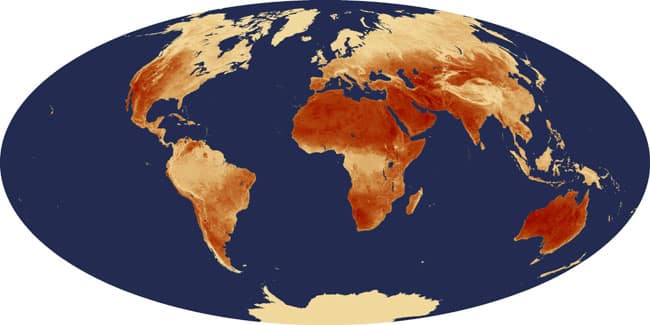
Global temperatures are likely to surge to record levels in the next five years, fueled by heat-trapping greenhouse gases and a naturally occurring El Niño event, according to a report issued on May 17 by the World Meteorological Organization (WMO).
There is a 66% likelihood that the annual average near-surface global temperature between 2023 and 2027 will be more than 1.5°C above pre-industrial levels for at least one year. There is a 98% likelihood that at least one of the next five years, and the five-year period as a whole, will be the warmest on record.
“This report does not mean that we will permanently exceed the 1.5°C level specified in the Paris Agreement which refers to long-term warming over many years. However, WMO is sounding the alarm that we will breach the 1.5°C level on a temporary basis with increasing frequency,” said WMO Secretary-General Prof. Petteri Taalas.
“A warming El Niño is expected to develop in the coming months and this will combine with human-induced climate change to push global temperatures into uncharted territory,” he said. “This will have far-reaching repercussions for health, food security, water management and the environment. We need to be prepared.”
There is a 32% chance that the five-year mean will exceed the 1.5°C threshold, according to the Global Annual to Decadal Climate Update produced by the United Kingdom’s Met Office, the WMO lead center for such predictions.
The chance of temporarily exceeding 1.5°C has risen steadily since 2015, when it was close to zero. For the years between 2017 and 2021, there was a 10% chance of exceedance.
“Global mean temperatures are predicted to continue increasing, moving us away further and further away from the climate we are used to,” said Dr Leon Hermanson, a Met Office expert scientist who led the report.
Key points
- The average global temperature in 2022 was about 1.15°C above the 1850-1900 average. The cooling influence of La Niña conditions over much of the past three years temporarily reined in the longer-term warming trend. But La Niña ended in March 2023 and an El Niño is forecast to develop in the coming months. Typically, El Niño increases global temperatures in the year after it develops – in this case this would be 2024.
- The annual mean global near-surface temperature for each year between 2023 and 2027 is predicted to be between 1.1°C and 1.8°C higher than the 1850-1900 average.
- There is a 98% chance of at least one in the next five years beating the temperature record set in 2016, when there was an exceptionally strong El Niño.
- The chance of the five-year mean for 2023-2027 being higher than the last five years is also 98%.
- Arctic warming is disproportionately high. Compared to the 1991-2020 average, the temperature anomaly is predicted to be more than three times as large as the global mean anomaly when averaged over the next five northern hemisphere extended winters.
The new report was released ahead of the World Meteorological Congress, 22 May to 2 June. Priorities for discussion at this year’s Congress include the ongoing Early Warnings for All initiative, and a new Greenhouse Gas Monitoring Infrastructure.
(Adapted from material published by the World Meteorological Organization)


